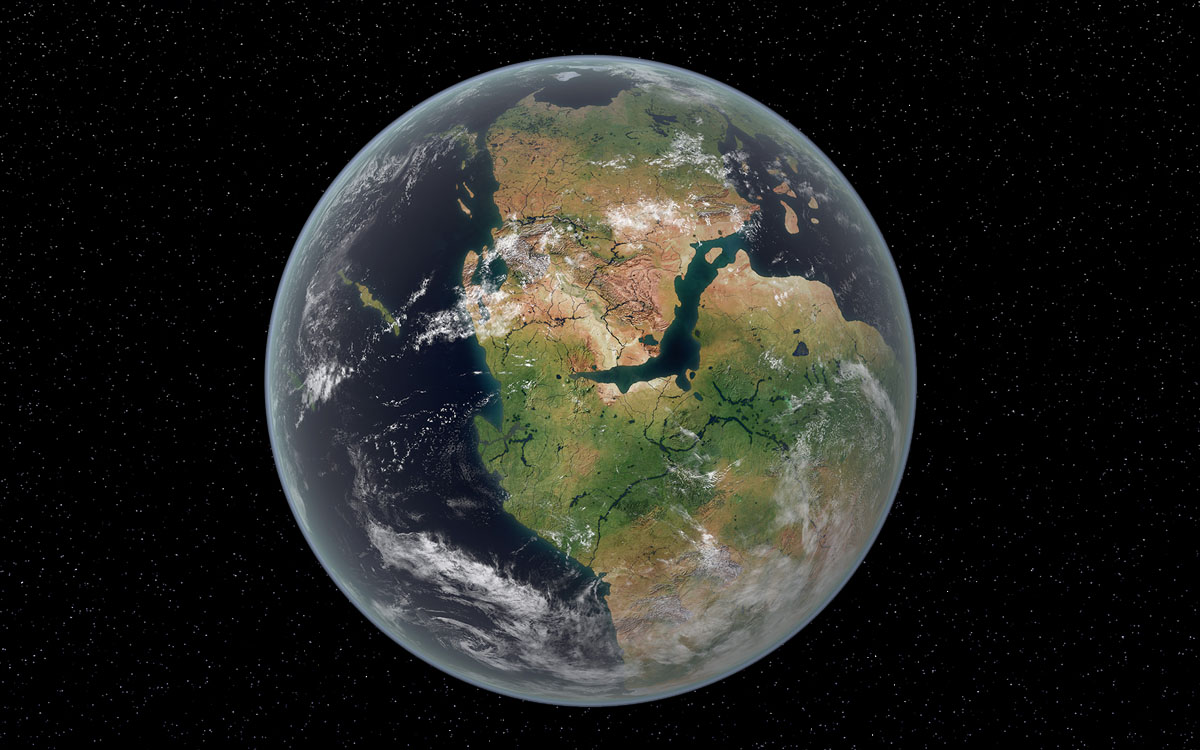the billion year old connection between tasmania and arizona

Imagine yourself on Earth a billion years ago. A supercontinent spreads across the planet’s South Pole, which is encrusted in ice. It’s a barren, rocky desert with random volcanoes and lakes dotting the landscape. Nothing lives on land except the bacterial ancestors of plants scattered around freshwater inlets. The first animals, small discs with primitive proto-organs are still half a billion years away. This supercontinent is called Rodinia, a mashup of the Russian words родина and мировой, or “place of birth” and “global.” It lasted for 350 million years and contained much of the land we live on today in completely alien configurations.
How jumbled up were our modern continents inside Rodinia? A new study tracing the isotopes of hafnium, a metal found in zirconium crystals geologists use to track how Earth’s landmasses evolved, determined that Tasmania and the land that would become the Grand Canyon were part of the same rock formation. The researchers say this finding, when taken in context, helps them understand the whole picture of how Rodinia formed. It emerged as pieces of a previous broken supercontinent called Columbia drifted back together over modern day Antarctica, the opposite side of the world from their previous geographic center.
Incidentally, this is how the next supercontinent will form 250 million years from now. Parts of Pangea which make up the seven continents on which we live started out in what today is the middle of the Atlantic Ocean and will meet up in what is currently the middle of the Pacific, having effectively traveled halfway across the world. This is known as extrovert assembly, as opposed to introvert assembly, a process during which supercontinents break up into individual landmasses and then drift right back together.
Assemblies like these happened between five and seven times so far in roughly 500 million year cycles, depending on whether you count the still hypothetical supercontinents of Vaalbara and Ur, and there are probably another two left before the aging, expanding Sun boils off our oceans. It’s a direct consequence of magma convecting under the planet’s crust and forming a network of mid-ocean ridges connected into a sort of seam that wraps itself around the world and pushes tectonic plates around. As they collide in slow motion over a finite area, they’ll inevitably create configurations in which Earth’s surface will end up with a single supercontinent and a single global ocean.
Now, you may be wondering why this matters. Who cares what the planet looked like billions or hundreds of millions of years ago? Well, we owe many myths about lost continents and ancient civilizations advanced beyond our wildest dreams but doomed by natural cataclysms, to ignorance about how tectonic plates work. Fictional sunken continents like Mu and Lemuria, and the 19th century interpretation of Atlantis as its own continent were created to reconcile the similarities in coastlines and rock formations found by geologists.
Not knowing that continents can move, they were left with land bridges as the only plausible explanation. If we still didn’t understand plate tectonics today, this article would be asking about a lost mountain range connecting Australia and North America to interpret how Tasmanian and Grand Canyon rocks could be parts of the same formation, and running into problems when trying to find evidence for a sunken continent twice as long as Asia. Of course, we’d then have to point out that whatever event destroyed it should’ve been instantly obvious to geologists considering the masses and energies that would be involved, so you can see the problem with the sunken continent hypothesis and how much the theory of plate tectonics explains.
Understanding the history of supercontinents, how they form, break up, and how landmasses drift on currents of magma gives us useful information about volcanic and seismic activity we can use to protect our cities. It also means we have no need to look for continents and civilizations that never existed and indulge arcane occult histories and myths that were in vogue at the end of the 19th century. And we can even try to predict the future by following the motion and direction of the landmasses to their logical conclusions, an exercise that yields some fascinating ideas.
See: Mulder, J., et al., Rodinian devil in disguise: Correlation of 1.25–1.10 Ga strata between Tasmania and Grand Canyon, Geology (2018) 46 (11): 991-994, DOI: 10.1130/G45225.1





